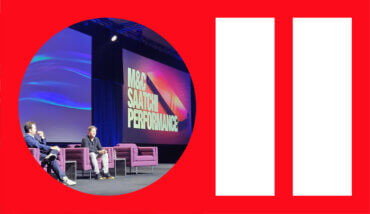While the consensus is that the mobile advertising user experience has made significant strides forward, this growing sophistication also makes it harder for marketers to decide how to move beyond the standard banner ad. Native advertising, cross-device advertising, social media, enhanced targeting and real-time bidding can all help marketers significantly enhance their mobile strategies. However, mobile advertising has also become more fragmented this year with multiple companies all vying for brands with different propositions, and this is where performance marketing agencies can bring value.
“There are many companies out there trying to provide alternative options to standard ad formats,” said Alexis Berger, vice president of Midwest sales at Kargo, New York.
“The question becomes ‘A: Do they have the scale to make an impact, and B: Do they have the right properties to run them on,'” she said.
Mobile advertising has become increasingly more sophisticated this year, as evidenced by the growth in brands adopting a number of different strategies, including native ad formats to create scalable campaigns. Marketers have placed a significantly bigger focus this year on mobile native advertisements as an alternative to static banner ads. Although fragmentation and scale remain issues, the value proposition of integrated ads that do not feel intrusive is catching on with both advertisers and consumers.
“Consumers have a deeply personal relationship with their mobile devices and so there’s a higher expectation for how brands reach them through this medium,” said Deborah Powsner, vice president of marketing and consumer insights at SessionM, Boston. “Mobile ads need to feel like a seamless, relevant piece of the experience.”
“While native ads were once reserved for test campaigns or large promotions, we’re starting to see this format become an evergreen piece of brands’ media buys,” she said. “I expect we’ll see a lot more of this in 2014.”
As mobile continues to move closer to becoming more contextual and relevant, native ad placements let marketers adapt their creative to fit bigger ad formats. In fact, SessionM chalks up 20 – 30 percent click-through rates on brand campaigns due to a differentiated experience from the 200 X 350 banner ad. Cross-platform advertising is growing in importance for marketers, evidenced by a new study from ValueClick Media and Greystripe which found that one-third of digital ad budgets will be allocated to cross-device campaigns this year.
The problem with cross-screen campaigns though is that the experience is often the same with ad copy tweaked to fit the size of the screen. One of the other main ways that mobile advertising has changed this year is around targeting, including location and social media. Twitter and Facebook are two of the heaviest hitters in social media this year in terms of boosting their mobile strategies. In fact, Facebook’s most recent numbers show that 40 percent of revenue comes from mobile, which is significantly higher than the 23 percent that the medium represented in the fourth-quarter of 2012.
“The increase in social media means that there is much more data that Facebook has on its users and their interest,” said Eric Mugnier, senior vice president of North America at M&C Saatchi Performance, London.
“This is becoming increasingly sophisticated,” he said. “Coupled with conversion tracking, we can now effectively increase customer ROI.”
Although mobile continues to grow in importance for Facebook, many experts argue that the user experience is not the best. For mobile to hit a tipping point for Facebook, the user experience will need to improve so that consumers are still able to browse through the site without feeling bombarded by sponsored news. Twitter has also expanded its advertising options for marketers around second-screen efforts, with brands such as Sprint testing new ways to drive tune-ins and engagement during live TV (see story). Real-time bidding has also helped achieve better mobile targeting this year at a granular level, according to Mr. Mugnier.
The data that marketers are able to collect via new types of mobile advertising has also been significant in swaying marketers to invest more this year.
Mobile devices collect ten times the number of user signals that desktops collect, opening up new opportunities for brands to do more with mobile than repurpose ads, according to Anne Frisbie, vice president and general manager of global supply at InMobi, Singapore. For example, more precise types of location are being used by brands this year to tap into mobile’s goal of taking an advertising message down to a hyperlocal level.
“As marketers have begun to open themselves up for new digital marketing approaches on mobile from what they have done on desktop, innovation is starting to show up in the area of data and targeting,” Ms. Frisbie said.
“I love to see testing around in-app purchase data, mobile lifetime value calculations that drive audience segments, geo lookalike models or in store visit attribution studies,” she said.

